White, sweet-scented Parijat flowers bloom on the Parijat tree. They blossom at night and wilt by the next morning.
The goddess Lakshmi is said to favor the blossoms, which are used in religious rituals and festivals. Parijat leaves are utilized in Ayurvedic medicine and are said to have a variety of uses.
This plant is also known as “Raat Ki Rani” or “Ayctanthes Arbor-Tristis” or “Night-flowering Jasmine”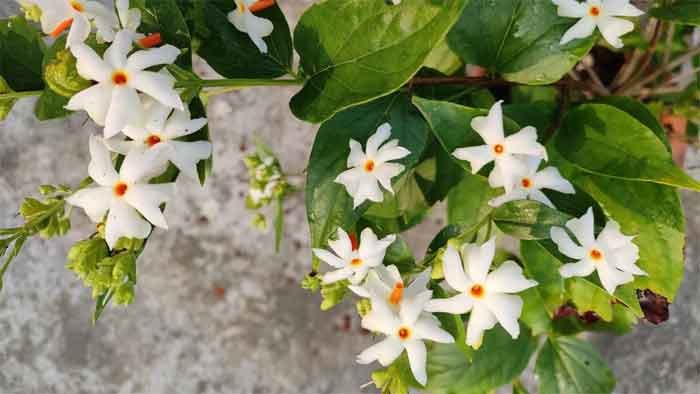
Facts About Parijat Plant / Raat Ki Rani
It’s grown for its floral and foliage attractiveness. It’s commonly known as night jasmine and belongs to the Oleaceae family. Nyctanthes comes from the Greek term The genus of Parijat trees is Nyctanthes, which derives from the Greek word “Nykhta” for “night,” and “anthos” for flower.
The tree is massive, reaching a height of 10 meters. This plant has various medicinal qualities and is well-liked in rural areas. It is a terrestrial, woody, perennial plant with a lifespan of 5 to 20 years.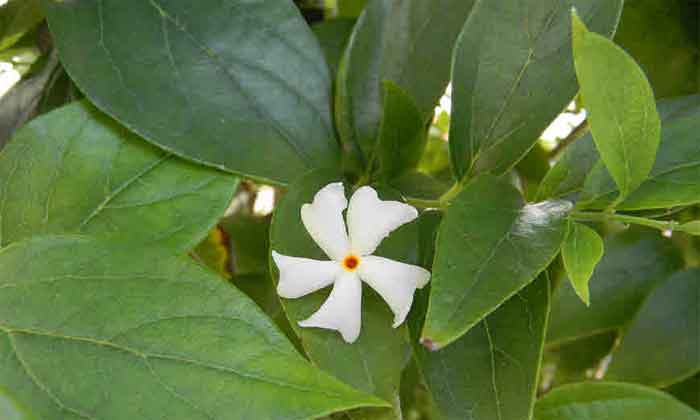
The parijat tree is popularly known by several different names in various languages. It is also referred to as Rat ki Rani locally, which means Queen of the Night.
Some individuals believe that it is harmful to produce Parijat at home, but this isn’t the case. This plant may be cultivated in a pot at home. However, for the plant to grow successfully, appropriate attention must be paid.
Want to know how to identify bhringraj plant ? Here is the guide.
History Of Parijat Plant
Many items emerged from the ocean as a consequence of Samudra Manthan. The Parijat plant is one of them. It was purported that both gods and demons desired this tree, but Lord Indra stole it away. This tree was planted in Indrapuri by Indra after he took it from Arjuna. Arjun brought earth this plant.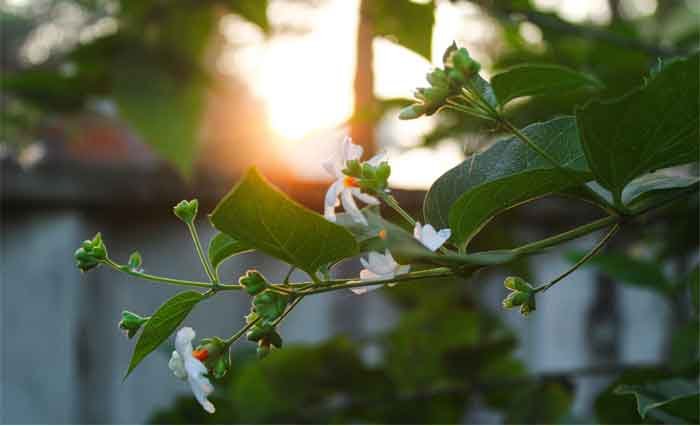
This tree, according to mythology, grew from the ashes of Kunti. There was a slew of tales about how the Parijat plant came to be.
Meaning of Parijat
In different languages and countries, the name Parijat has various meanings. Parijat also implies fragrance and originated from/the celestial realm.
Know about about Brahmi plant here.
Characteristics
Parijat Flower
Parijat’s flowers are small and slender. The majority of the time, the flower has six petals, but there are exceptions. The calyx of this flower is (6-8) mm long, as well as the corolla, which is glabrous. Rat Ki Rani blooms in late September and December. The flowers range from white to orange with a purple peduncle.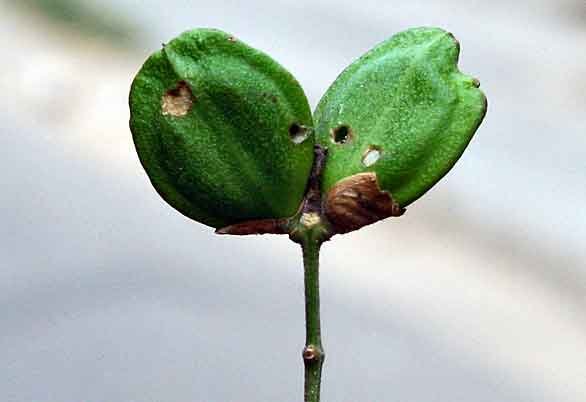
The Parijat is a unique species in that it grows on the ground during the day and at night. It’s associated with a religious legend involving Satyabhama, Krishna’s wife. Once Satyabhama, Krishna’s wife observed this flower in her garden, she was completely taken by its fragrance and beauty.
So, when She asked her spouse Lord Krishna to bring her that flower, he was forced to do so. Later, Lord Indra learned that the flower was in Heaven with him. So he traveled to Heaven and brought a tree with him.
However, when Lord Indra saw Lord Krishna carrying the flower, a battle ensued between the gods. When Krishna is victorious, he takes possession of the bloom. But Indra has decreed that this plant shall never bear fruit.
Also, read a bit about the jute plant and all about it.
When parijat blooms fall to the ground, a lovely picture emerges. A gorgeous environment develops. If you’ve never seen it, consider comparing it to Gulmohar Tree blooms. It’s the only flower in the world that gets presented to God after being plucked from the earth.
Raat Ki Rani / Parijat Leaves
Unicostate and reticulate venation are present in the Parijat plant’s leaves.
Care And Management
Temperature
The optimum temperature for Parijat plants is 20-25 degrees Celsius. In extremely cold weather, it cannot survive.
Note: Want to plant a tulsi plant at home? Here are the types of tulsi plant you should know about and which one to bring one home.
Soil
The ideal soil for Parijat trees is well-drained, fertile soil with high organic content. This plant prefers soils with a pH of 5.6 to 7.
Water
The plant is harmed by standing water in the container. As a result, adequate drainage must be provided. During the summer, Parijat trees should be watered thoroughly twice a week; during the winter, once every two weeks. When the top 1-2 inches of soil appear dry, around 200ml of water should be applied.
Training and Pruning
In this plant, training and pruning are required for horticultural procedures. You may train your plant to achieve the desired form. Pruning of the plant begins at the seedling stage. Branches with low crotch angles are removed regularly as part of tuning up. Branches that have been infected, old, or broken are trimmed off regularly.
Consider reading about touch me not plant and its uses here.
Propagation
Prepare a potting mix with an equal mix of normal garden soil and compost for planting from seeds. The ideal moisture level is essential, but overwatering should be avoided. Germination takes approximately 7-14 days once you sow the seeds.
After the first Trifolium generation has finished, additional generations will be planted. These plants must be transplanted before the fourth or fifth leaf stage.
Spiritual/Religious Importance
The Pitajat Tree is holy. It’s significant from a religious and spiritual perspective.
Parijat Plant Vastu Shastra
They are both visually appealing and conducive to peace and tranquility. 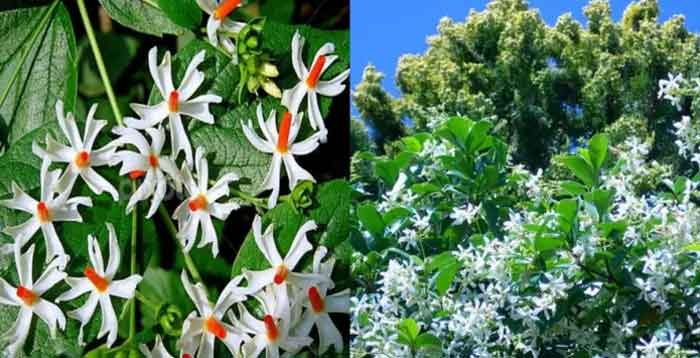 According to Vastu, Parijat plants should not be positioned in the southwest, northwest, or eastern quadrants of your home.
According to Vastu, Parijat plants should not be positioned in the southwest, northwest, or eastern quadrants of your home.
Read the complete guide on vastu for trees and plants here.
Parijat Leaves Advantages
Cough and fever are treated with a combination of leaf juice and honey. Leaf juice is utilized for treating digestive issues as well.
Parijat Uses/Benefits
Parijat or Rat Ki Rani, a plant from the Periwinkle family, has a variety of applications. The following are some examples:
- The leaves of this plant, when crushed and mixed with honey, are used to treat persistent fever. Gastric issues and respiratory problems are treated using the flowers of this plant.
- This plant’s stem is used to relieve joint pain, bronchitis, and snake bites. The antipyretic properties of Parijat plants have led to its use in the treatment of dengue, malaria, and chikungunya. Parijat plant bark and leaf extracts provide fast relief from fever.
- This plant’s essential oil is also used to treat stomach pains.
Also Read About:
Conclusion
Parijat is a valuable plant with many benefits. The plant is revered in Hindu mythology and is considered holy. As per the Vastu Shastra for home, it is recommended to place this plant in the northeast or southwest quadrants of your home.
The leaves and flowers of the parijat plant have many medicinal uses and are used to treat a variety of ailments. You can purchase seeds or plants from a nursery to grow this valuable plant in your garden.



Thanks for giving me some good information about this plant. Till now, I was keeping it in the wrong direction. It’s time to follow the suggestions